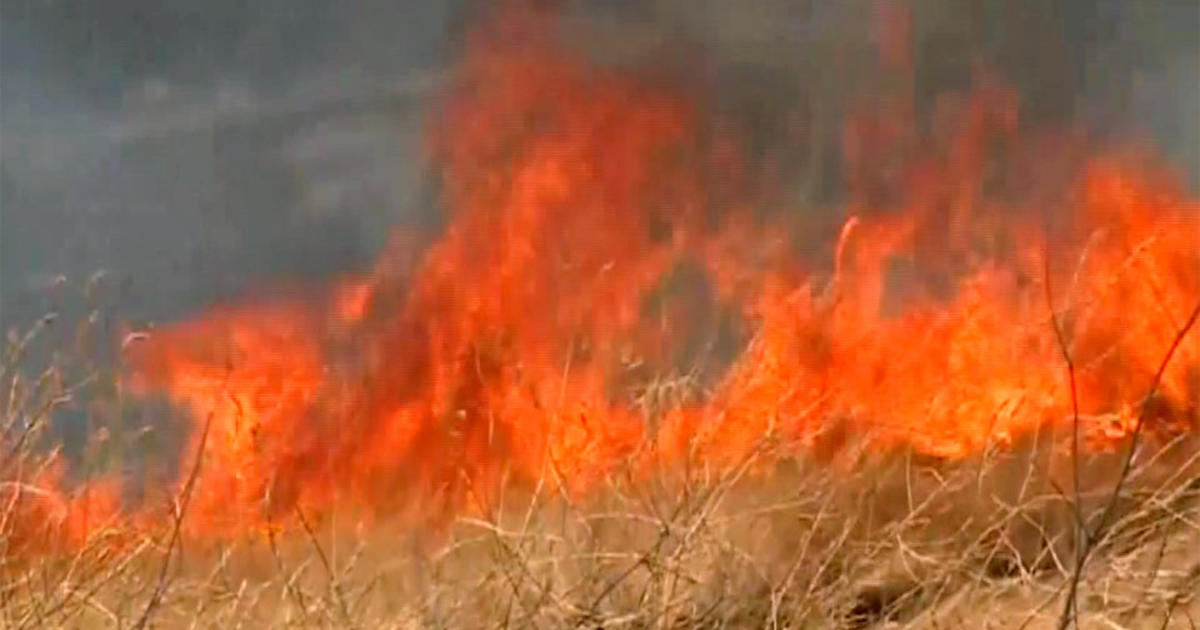Local Firefighter Talks Of Battle In California
ZIMMERMAN, Minn. (WCCO) -- It's a terrifying and surreal view, the video clips of relentless flames surrounding people trying to escape wildfires in California.
"It's explosive," Paul Talbot said of Paradise Camp Fire in northern California, as well as the Hill and Woolsey fires in the southern part of the state.
Talbot has seen the danger firsthand. He's been wildland firefighter since 2003, traveling out west almost every summer since then. From Washington down to California and around the Rocky Mountains, Talbot said he once spent 59 days straight working with a helicopter crew, fighting multiple fires across Colorado.
Sometimes he's on the front lines, other times he's in a helicopter, and recently he's been a communication specialist for the crews in the field.
"Your job is to basically keep yourself safe and the people around you safe at all times while you're also trying to do these other jobs (such as) putting a fire line here or evacuate this neighborhood there," he said.
He typically worked 16-hour shifts, but says California crews will work 24 hours straight before getting relieved.
"It can get tiring if you're sleeping in the smoke, living in the smoke, working in the smoke, it's tough," he said. "Last I heard as well is many of the fire fighters fighting this fire in California, this Camp Fire, they're losing their own homes at the same time that they're trying to save as much as they can."
Then there's the loss of life, a death toll reaching at least 31 people as of Sunday night.
"It breaks my heart," he said while stressing the importance of evacuating when ordered to. "I know being at a firefighter's memorial service for a fatality a few years ago, all his mother asked of the people was when they tell you to leave, go."
With changing weather patterns, California's landscape and the growth of neighborhoods in wooded areas, Talbot said wildfire prevention and awareness are of the utmost importance.
"We need to care about wildland fires more than we have in the past. It's only gonna get worse," he said.
Wildfires happen in Minnesota, which Talbot is also tasked with monitoring and controlling. He said a common problem happening nowadays is the use of personal drones.
"Our stance on our end across the board, if a drone is viewed in the fire area where we put up a temporary flight restriction, we shut down all aircraft and we try to find the person that has the drone," he said.
Talbot said there's too much of a risk having fire crews in aircrafts flying near drones.
"There hasn't been an actual fatality but if this keeps happening, there will be. We can't change the weather pattern, we can't say 'Hey wind stop blowing.' But we can get people to stop flying their drones," Talbot said.
Talbot also had advice for homeowners living in wooded areas across Minnesota and Wisconsin on how to better protect their homes in case of a wildfire.
"You can move your log pile from under the deck out, you can clean all the needles out of your gutters, don't have cedar shake shingles," he said, pointing out fire fuel sources.
He also suggested people get sprinkler systems. He said some were installed along the Gunflint Trail in north Minnesota and helped stop the spread of a wildfire.
"Most of those homes that had sprinkler systems during the Ham Lake fire in 2007 survived," he said.



